Info
Subfamily: Chloridoideae
Genus etymology: Sporobolus = "seed thrower" referring to the seed being ejected from the pericarp
Species etymology: africanus = from Africa
Photosynthetic type: C4 (warm season)
Nativity: naturalized - accidental
First recorded in Hawaiʻi: 1903
Map
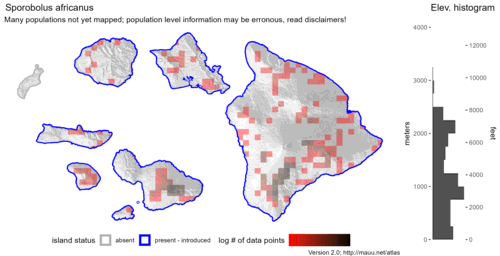

Inflorescence
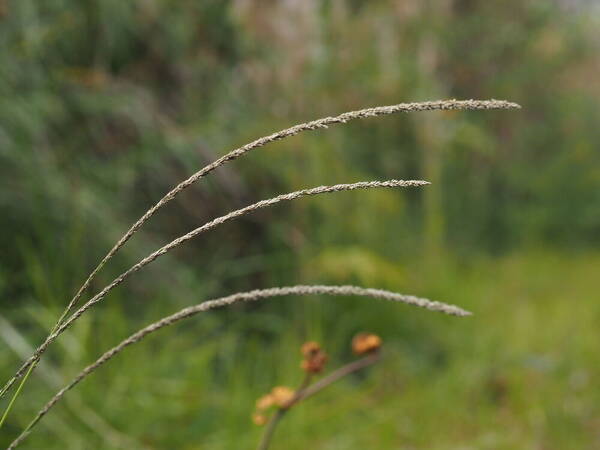
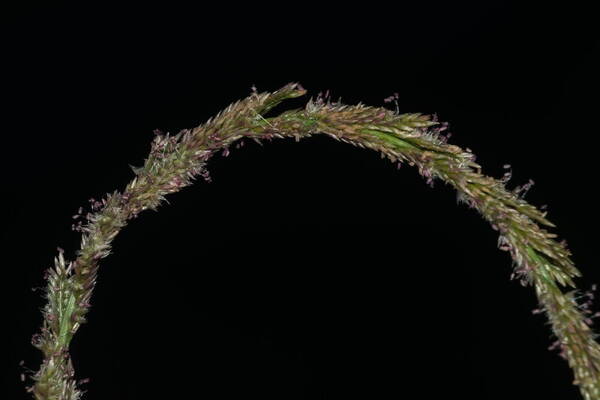
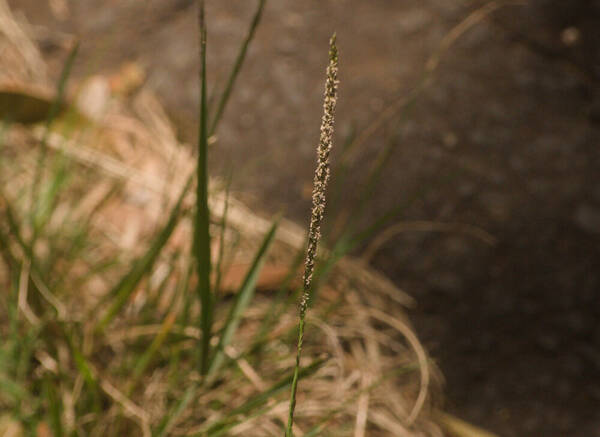
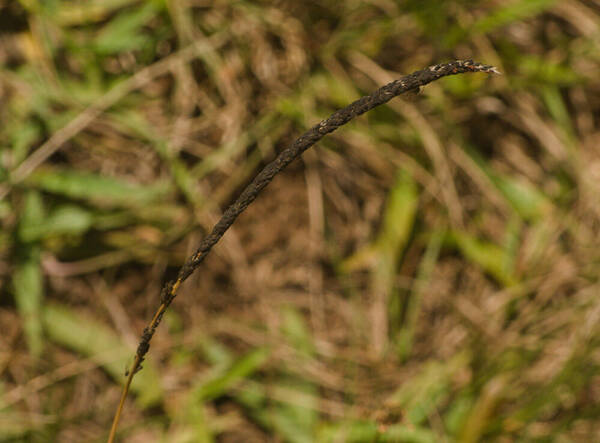
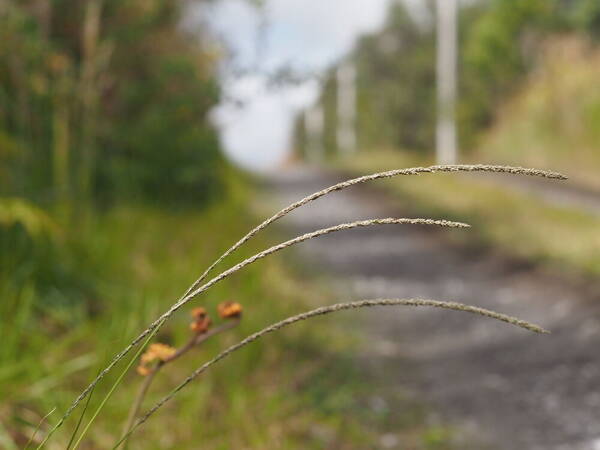
Plant
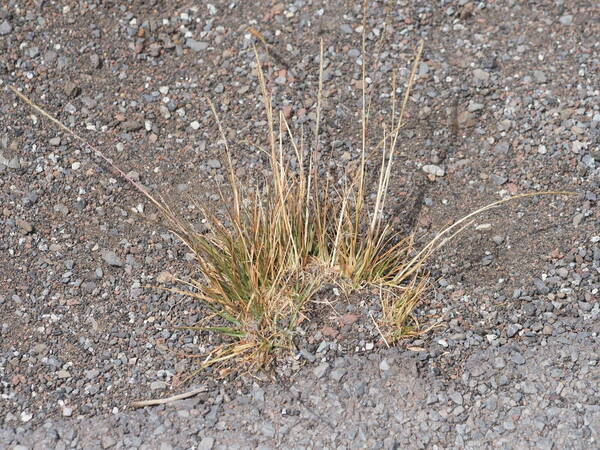
Habit
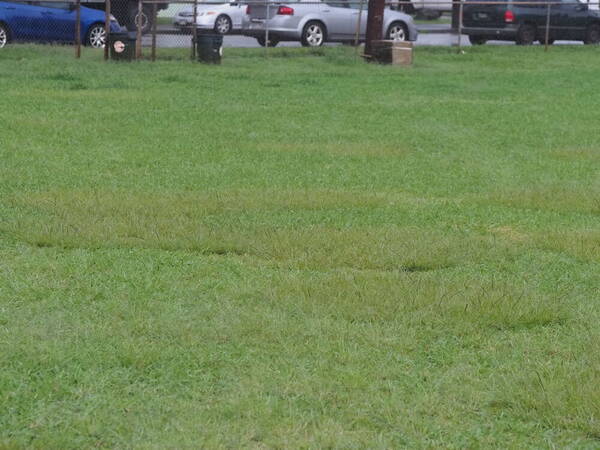
Spikelets
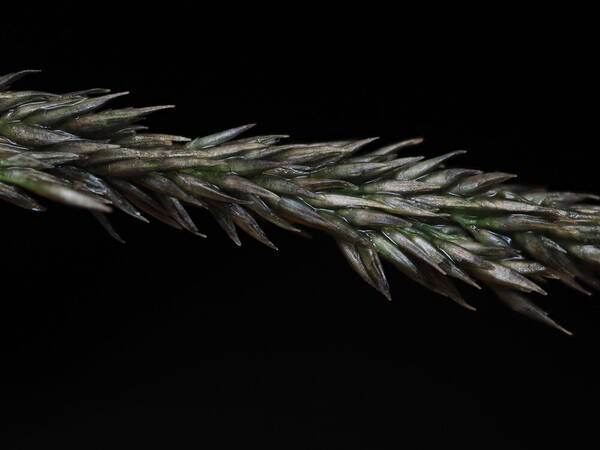

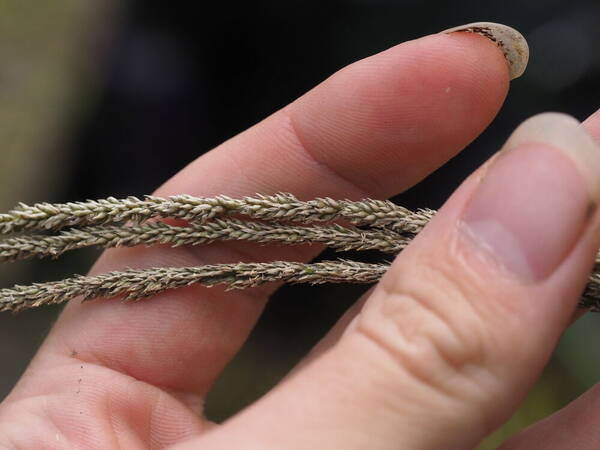
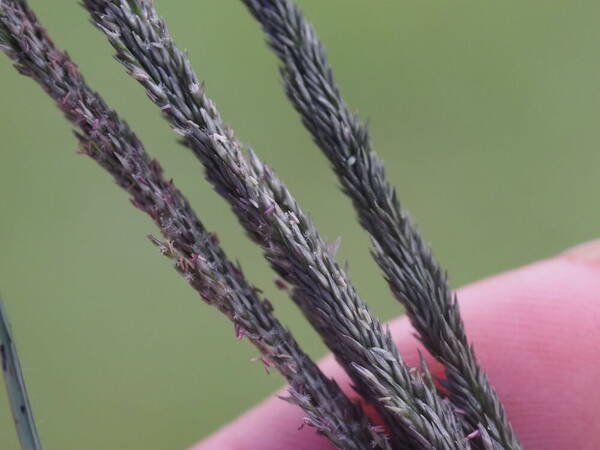
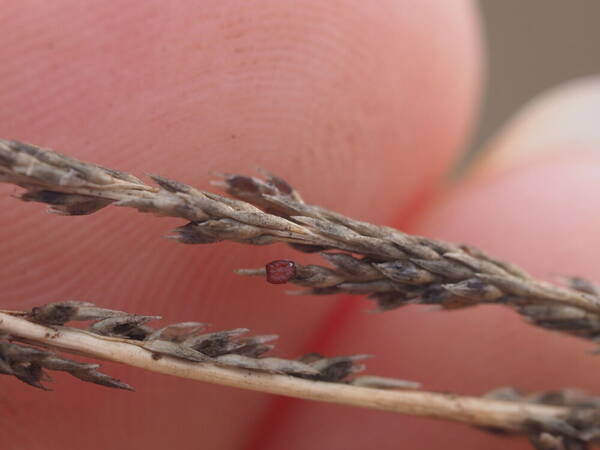
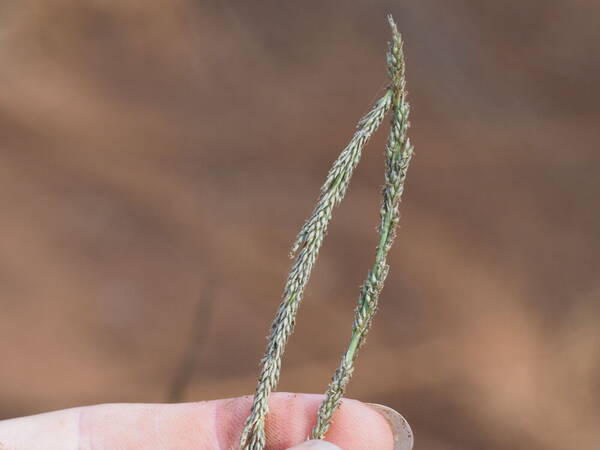

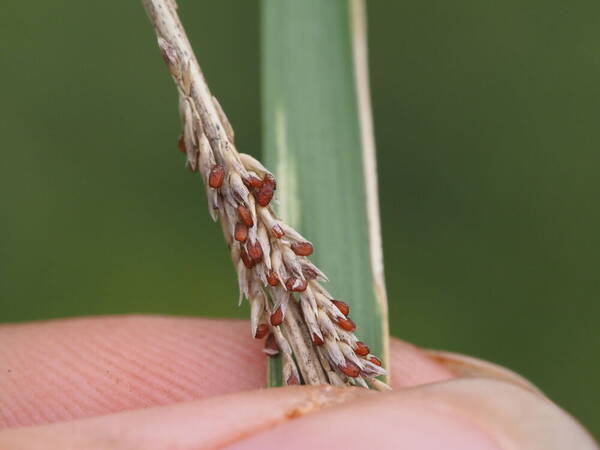
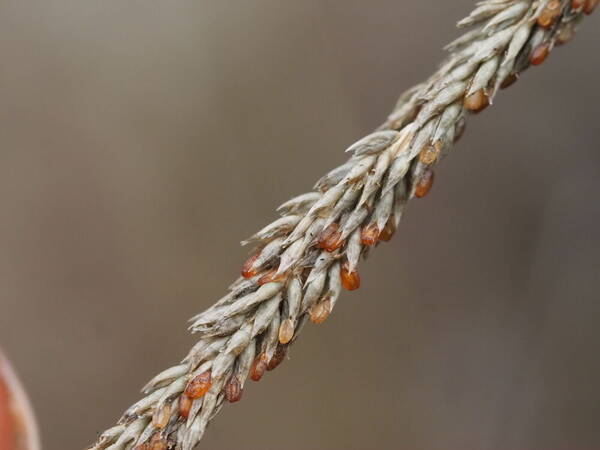
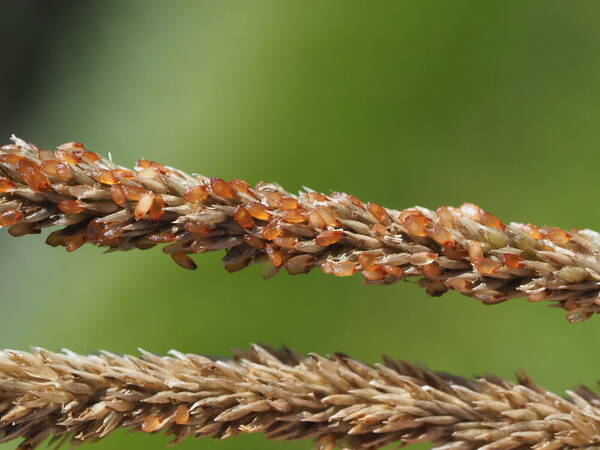
Description
Tufted perennial, the basal sheaths rather broad and somewhat papery; culms 30–110 cm. high, 1.5–3 mm. in diameter at the base. Leaf-blades flat or convolute, up to 40 cm. long, 1–4 mm. wide, tapering to a long filiform tip. Panicle linear with short side branches to spiciform, 10–35 cm. long, dense; primary branches appressed to the main axis, subsecund, densely spiculate along their whole length, the lowest 1–2 cm. long. Spikelets (1.5–)2.1–2.8 mm. long, dark green; lower glume broadly oblong, 0.4–0.7 mm. long, hyaline, obtuse; upper glume narrowly ovate, 1–1.5 mm. long, ± 1/2 as long as the spikelet, acute; lemma ovate-elliptic, as long as the spikelet, acute; anthers 3, 0.6–0.8 mm. long. Grain ellipsoid, (0.8–)1.1– 1.2 mm. long, truncate at the top, often ± tetragonal in cross-section.
(Description source: Clayton, W.D. 1970. Flora of Tropical East Africa. Gramineae (Part 1). Crown Agents for Oversea Governments and Administrations, London. 176 pp. )
Caespitose perennial without rhizomes or stolons; culms up to 130 cm tall, erect, unbranched; basal leaf sheaths broad, chartaceous, glabrous, laterally compressed, persistent; leaf laminas up to 40 cm × 1–4 mm, flat or involute, glabrous or scaberulous on the surfaces, thinly scabrid on the margins, tapering to a long filiform apex.Panicle (10)20–45 cm long, linear to spiciform; primary branches not in whorls, appressed to the main axis 1–2 cm long, thinly scabrid, eglandular, subsecund, the spikelets densely arranged along their whole length.Spikelets 1.7–2.6 mm long, greyish-green to dark green; inferior glume 1/5–2/5 the length of the spikelet, broadly oblong, hyaline, nerveless, glabrous, obtuse at the apex; superior glume 2/5–3/5 the length of the spikelet, narrowly ovate, hyaline, 1-nerved, glabrous, acute at the apex; lemma as long as the spikelet, ovate-elliptic, acute; anthers 3, 0.6–1.2 mm long.Grain (0.8)1–1.2 mm long, elliptic to obovate, truncate at the top, tetragonal in section.
(Description source: Pope, G.V. (ed). 1999. Flora Zambesiaca. Volume 10. Part 2. Kew, London. 261 pp. )
Habit: Perennial; caespitose. Butt sheaths papery. Culms erect; 30-110 cm long; 1.5-3 mm diam. Ligule a fringe of hairs. Leaf-blades flat, or convolute; 20-40 cm long; 1-4 mm wide. Leaf-blade apex filiform. Inflorescences: Inflorescence a panicle. Panicle contracted, or spiciform; linear; 10-35 cm long; contracted about primary branches. Primary panicle branches appressed; 1-2 cm long; bearing spikelets almost to the base. Panicle branches glabrous in axils. Spikelets solitary. Fertile spikelets pedicelled. Spikelets: Spikelets comprising 1 fertile florets; without rhachilla extension. Spikelets lanceolate; subterete; (1.5-)2.1-2.8 mm long; breaking up at maturity; disarticulating below each fertile floret. Fertile Spikelets: Spikelets comprising 1 fertile florets; without rhachilla extension. Spikelets lanceolate; subterete; (1.5-)2.1-2.8 mm long; breaking up at maturity; disarticulating below each fertile floret. Glumes: Glumes deciduous; dissimilar; shorter than spikelet. Lower glume oblong; 0.4-0.7 mm long; 0.4-0.5 length of upper glume; hyaline; without keels; 1 -veined. Lower glume lateral veins absent. Lower glume apex obtuse. Upper glume ovate; 1-1.5 mm long; 0.5 length of adjacent fertile lemma; membranous; dark green; without keels; 1 -veined. Upper glume lateral veins absent. Upper glume apex acute. Florets: Fertile lemma ovate; (1.5-)2.1-2.8 mm long; membranous; dark green; without keel; 1 -veined. Lemma apex acute. Palea 2 -veined. Palea keels approximate. Flowers: Anthers 3; 0.6-0.8 mm long. Fruits: Caryopsis with free soft pericarp; ellipsoid; quadrangular; (0.8-)1.1-1.2 mm long. Distribution: Africa: Macaronesia, west tropical, west-central tropical, northeast tropical, east tropical, southern tropical, south, middle Atlantic ocean, and western Indian ocean. Asia-temperate: Arabia. Asia-tropical: India, Malesia, and Papuasia. Australasia: Australia and New Zealand. Pacific: southwestern, south-central, northwestern, and north-central.
(Description source: Clayton, W.D., Vorontsova, M.S., Harman, K.T. and Williamson, H. (2006 onwards). GrassBase - The Online World Grass Flora. Available at https://powo.science.kew.org )
Perennials; culms sparsely to densely tufted, wiry, 3-10 dm tall. Sheaths 4-12 cm long, compressed, pilose at throat and - along margins but otherwise glabrous; ligule ciliate, less than 0.2 mm long; blades flat to weakly involute, 10-25 cm long, 2-5 mm wide at base, glabrous, apex attenuate. Panicles 15-25 cm long, erect, spike-like, sometimes interrupted at base, branches short, closely appressed; spikelets (1.5-)2- 2.8 mm long, glabrous; first glume oblong, 0.4-0.7 mm long, apex obtuse, second glume ovate, 1-1.5 mm long, apex acute; lemma oblong to lanceolate, ca. 2 mm long, faintly 3-nerved, hyaline, apex obtuse to acute; palea as long as lemma. Fruit dark red, obovate, 1.2-1.5 mm long, apex obtuse to truncate, readily separating from the spikelet but often adhering to the panicle for some time after maturity by the mucilaginous pericarp. [2n = 18, 36.]
(Description source: O’Connor, P.J. 1990. Poaceae, pp. 1481–1604. In: Wagner W.L., Herbst D.R. & Sohmer S.H. (eds.)., Manual of the flowering plant of Hawaiʻi. Vol. 2. University of Hawaii Press & Bishop Museum Press, Honolulu )